Results 10,041 to 10,050 of 12091
Thread: Anandtech News
-
11-11-19, 04:42 PM #10041
Anandtech: Eurocom’s Sky X4C & X7C Laptops Get Intel’s Core i9-9900KS
Eurocom, the well-known purveyor of ultra-high-end laptops for gamers and professionals, has announced that it has started equipping its Sky X4C and Sky X7C desktop replacement notebooks with Intel’s Core i9-9900KS processor. In fact, the company is so confident in the design of those notebooks that it is even selling SKUs designed for overclocking the already highly-clocked CPU.
Eurocom’s Sky X4C is a 15.6-inch DTR laptop that uses Intel’s socketed desktop processors, NVIDIA’s high-end GeForce RTX/GTX graphics cards in MXM form-factor, two SO-DIMMs, two M.2-2280 PCIe 3.0 x4 slots for SSDs, two 2.5-inch storage devices, and vast connectivity capabilities. When configured appropriately, the Sky X4C can indeed offer the performance of a higher-end desktop, though at 3.4 kilograms (7.48 pounds) it lives up to the desktop replacement name. The Sky X7C is an even more powerful machine with more options that comes with a 17.3-inch display and weighs 3.9 kilograms (8.58 pounds). You can check our own review of that beast here.
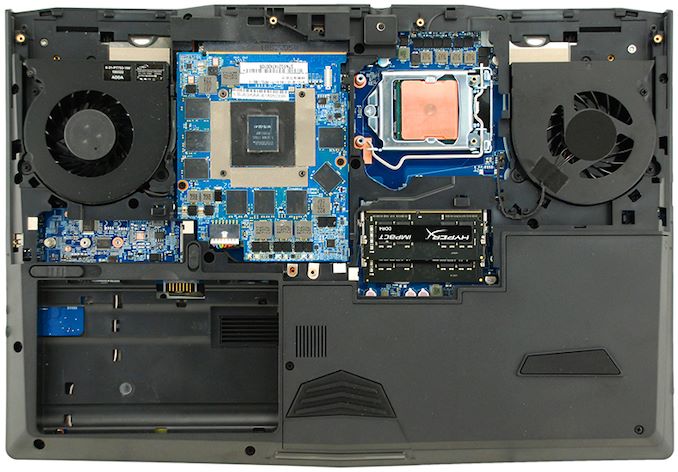
Intel’s eight-core Core i9-9900KS processor runs at a base frequency of 4.0 GHz with a 127 W TDP, and can turbo boost all of its cores to 5.0 GHz so long as there's sufficient power and cooling. And if that's not enough, Eurocom will also be SKUs tuned for overclocking, which de-lid the CPU, install a more sophisticated cooling system (new thermal compound, new IHS), and unlock the BIOS. Needless to say, the latter will push the hot chip even harder, but Eurocom is certain that its cooling system will cope with that.
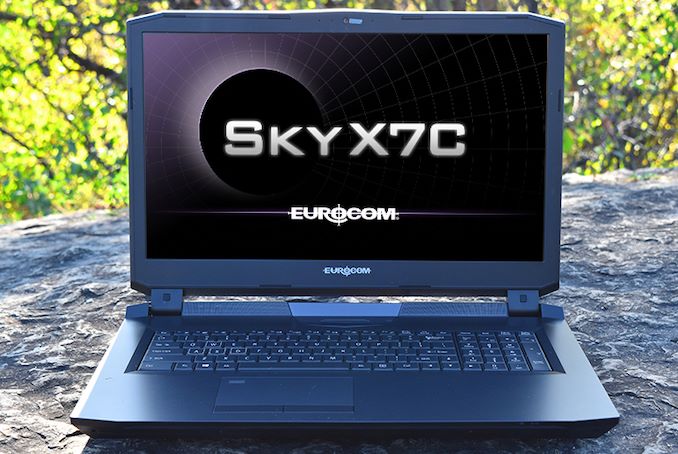
Eurocom’s X4C and X7C notebooks start at $2187 and $2166, respectively. When beefed up with something like Intel’s Core i9-9900KS, NVIDIA’s GeForce RTX 2080, multiple storage devices, and 128 GB of DDR4 memory on top of that, the price will push towards five digits.
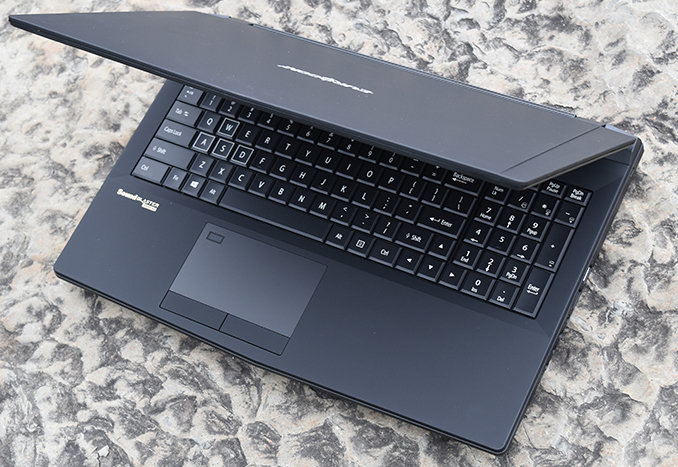
Related Reading:
- The Eurocom Sky X7C (Clevo P775TM1-G) Gaming Laptop Review: True Desktop Replacement
- The Intel Core i9-9900KS Review: The 5 GHz Consumer Special
- Eurocom Launches Tornado F7W DTR Laptop: Desktop Core i9-9900K with 128 GB of RAM
- Eurocom Launches Sky X4C, X7C and X9C Laptops with Core i7-8700K CPUs
Source: Eurocom
More...
-
11-12-19, 07:56 AM #10042
Anandtech: Seagate Announces FireCuda 520 PCIe 4.0 SSD
Seagate is refreshing their consumer SSD lineup with 96-layer 3D NAND, and introducing a new flagship model: the FireCuda 520, Seagate's first PCIe 4.0 SSD. As with every other consumer PCIe 4.0 SSD so far, the Seagate FireCuda 520 uses the Phison E16 controller. The FireCuda 520 arrives several months after the first Phison E16-based SSDs, and Seagate has used the time to refine the product a bit. They haven't made any firmware tweaks that affect performance, but the FireCuda 520 does use a Seagate-specific firmware variant that includes some extra security measures to protect against firmware hacks, and it's been through some extra QA.
In terms of hardware, the FireCuda 520 is a pretty standard Phison E16 reference design using Toshiba/Kioxia BiCS4 96-layer 3D TLC NAND flash memory. The drive uses a two-sided black PCB with no heatspreader or heatsink included, since most new motherboards are providing their own M.2 cooling solution. Seagate rates the FireCuda for up to a generous one drive write per day for the five-year warranty period. MSRPs for the FireCuda 520 match its status as a flagship drive, and are almost twice the street prices for the cheapest PCIe 3.0-based NVMe SSDs.
The rest of Seagate's consumer SSD lineup is also being updated. Their PCIe 3.0 SSD lineup was split evenly between the single-sided BarraCuda 510 (256GB and 512GB) and the double-sided FireCuda 510 (1TB and 2TB). Both models are sticking around under the same names, getting upgraded from 64L to 96L TLC while keeping the same Phison E12 controller. The new editions will also overlap in capacities: the BarraCuda 510 is gaining a 1TB model, and the FireCuda 510 is gaining a 500GB model. The FireCuda 510 is also switching from a blue to black PCB.Seagate FireCuda 520 SSD Specifications Capacity 500 GB 1 TB 2 TB Controller Phison PS5016-E16 (PCIe 4.0 x4) NAND Flash BiCS4 96L 3D TLC NAND Form-Factor, Interface Double-sided M.2-2280, PCIe 4.0 x4, NVMe 1.3 Sequential Read 5000 MB/s Sequential Write 4400 MB/s Random Read IOPS 760k IOPS Random Write IOPS 700k IOPS Pseudo-SLC Caching Supported TCG Opal Encryption No Warranty 5 years Write Endurance 900 TB
1 DWPD1800 TB
1 DWPD3600 TB
1 DWPDMSRP $124.99 (25¢/GB) $249.99 (25¢/GB) $429.99 (21¢/GB)
Seagate's BarraCuda SATA SSD is getting a more sensible update, gaining a new model designation (BarraCuda 120) to go with the new NAND.
Seagate has already started shipping the new SSDs to retailers, and product listings are already popping up on online retailer websites.
More...
-
11-12-19, 01:40 PM #10043
Anandtech: MSI Preps 240 Hz Optix MAG161 External Monitor for Laptops
In a bit of offbeat monitor news, MSI has teased via its CES award announcements that it is working on an external display for notebooks that is geared towards gaming. Seemingly externalizing one of MSI's gaming laptop displays, the upcoming Optix MAG161 is a 15.6 monitor with a blistering 240Hz refresh rate.
While few details are available today, it is safe to say that MSI’s Optix MAG161 uses the same 15.6-inch Full-HD 240 Hz LCD panel as the company’s high-end gaming notebooks (such as the GS65 Stealth). The display is said to feature wide viewing angles, so this is not a typical cheap TN-type unit with poor color reproduction.
The industry’s first 240 Hz external monitor for notebooks is said to be 5 mm thick and features HDMI and USB Type-C connectors to maintain compatibility with various laptops. The device will come with a special folio that will protect it during handling and will serve as a stand while in use.
The Optix MAG161 has already won a CES 2020 innovation award (ed: these get issued 2 months in advance of the show itself), so expect to see MSI is set to formally roll-out the external monitor at CES 2020 when it kicks off in January.
Related Reading:
- Lenovo's New 595-Gram Portable Display: The ThinkVision M14 USB-C Monitor
- New $196 AOC Portable Type-C Monitor: 15.6-inch 1080p IPS, 1.71lbs
- ASUS ProArt PQ22UC 4K OLED Monitor: £4699, ~$5150
Source: MSI
More...
-
11-12-19, 06:45 PM #10044
Anandtech: ASUS & Google Team Up for ‘Tinker Board’ AI-Focused Credit-Card Sized Comp
ASUS and Google have joined forces to develop a new project that the companies are calling ‘Tinker Board’ single board computers (SBCs). With a footprint not much larger than a credit card, the systems are designed for building small systems to work on AI inference applications like image recognition.
The systems in question are the Tinker Edge T and Tinker Edge R. The former is based on the NXP i.MX8M with an Edge TPU chip that accelerates TensorFlow Lite, whereas the Tinker Edge R is powered by the Rockchip RK3399 Pro processor with an NPU for 4K machine learning. The SBCs officially support Android and Debian operating system, though nothing prevents them from running Linux or other OSes.
Both Tinker Edge T and Tinker Edge R computers feature active cooling as well as mainstream I/O interfaces, including GbE, USB 3.0, and HDMI.
ASUS and Google position their Tinker Edge T and Tinker Edge R for various edge AI applications that have to be compact and very energy efficient.
ASUS plans to demonstrate its Tinker Edge T and Tinker Edge R SBCs at the IoT Technology 2019 conference in Japan, which kicks off on November 20. Pricing of the devices remains to be seen, but it will depend on volumes and other factors.
Related Reading:
- The ASUS ROG Phone II Review: Mobile Gaming First, Phone Second
- ASUS Shows Off ROG Strix Arion: A RGB USB 3.2 Gen 2 M.2 SSD Enclosure
- Google To Acquire Fitbit for $2.1 Billion
Source: ASUS (via PC Watch)
More...
-
11-13-19, 01:55 PM #10045
Anandtech: Apple’s 2019 Mac Pro and Pro Display XDR Will Be Available in December
Alongside today's 16-inch MacBook Pro announcement, Apple has also confirmed that their long-awaited redesign of the Mac Pro, which has been due this fall, will be launching next month.
Apple’s upcoming Mac Pro desktop will be the company’s highest-performing desktop in years and will address the key issues of the cylindrical Mac Pro, namely insufficient graphics performance as well as limited expandability. The Mac Pro systems will be based on Intel’s Xeon W processors with up to 28 cores paired with up to 1.5 TB of DDR4-2933 as well as up to 4 TB of solid-state storage (using two SSDs based on the T2 controller). To offer its customers a whopping compute and graphics performance, Apple will equip its Mac Pro with up to two AMD Radeon Pro Vega II Duo graphics cards in MPX form-factor with a total of 16384 stream processors (4096 SPs per GPU) and 128 GB of HBM2 memory (32 GB per GPU). Furthermore, the systems may be equipped with the Afterburner ProRes and ProRes RAW FPGA-based accelerator card, or any other accelerator that is compatible with PCIe 3.0 bus (granted that the system has 64 PCIe lanes). In fact, with a 1.4 kW PSU, the new Mac Pro could accommodate quite a lot of options.
With the new Mac Pro workstation offering massive performance, its owners will naturally benefit from new high-resolution displays and here Apple has a unique proposition with its unique Pro Display XDR, which is also due out in December. The 32-inch monitor is based on a 10-bit IPS panel and features a 6016×3384 resolution, 1,000 nits – 1,600 nits brightness (sustained/peak), and a 1,000,000:1 contrast ratio because of Mini-LED backlighting.
Apple will start taking orders on its new Mac Pro as well as Pro Display XDR in December. The Mac Pro workstation will start at $5,999 for a version with an eight-core processor. The standard version of the monitor will be priced at $4,999, whereas a model with nano-texture glass will be priced at $5,999. The display will come without a stand or VESA mount adapter that will have to be acquired separately for $999 and $199, respectively.
Related Reading:
- The Apple WWDC 2019 Keynote Live Blog (Starts at 10am PT/17:00 UTC)
- Apple to Redesign Mac Pro, Comments That GPU Cooling Was A Roadblock
- LG Unveils New UltraFine 4K & 5K Monitors: Now with iPad Pro Support
Source: Apple
More...
-
11-13-19, 01:55 PM #10046
Anandtech: Apple Rolls Out 16-Inch MacBook Pro: A Bit Bigger, A Bit More Refined
With rumors swirling for the last few months a new high-end MacBook Pro laptop from Apple, the company this morning is making those rumors a reality, announcing and launching the 16-Inch MacBook Pro. Replacing Apple’s 15-inch model, the new laptop is a half-step of sorts for Apple to improve their flagship professional laptop, addressing some long-simmering critiques about the laptop, but not radically overhauling the unibody-built, Touch Bar-equipped laptop design that Apple has used since 2016. The end result is a laptop that’s an incremental improvement over the 15-inch models, with Apple making the new laptop a bit larger, a bit more powerful, and significantly overhauling their problematic Butterfly Switch keyboard.
Apple’s MacBook Pro lineup of course needs no introduction. The company pioneered a lot of the design elements that have become common-place across the industry in premium laptops, including the ultrabook-like thin & light design, high-DPI (Reinta) displays, and more. However the most recent generation of models have been received with less enthusiasm, as Apple’s continued focus on thinness and soldering down components has run headlong into traditional expectations for what a “professional” laptop should entail. And while Apple is not one for mea culpas, I don’t think there’s any doubt that the 16-inch MacBook Pro design is an effort to respond to some of the biggest criticisms about the previous 15-inch design.
Overall then, the new 16-inch MacBook Pro is not a radically departure from the 15-inch in terms of the design. There are a few tells in the design – small changes that you’ll spot if you know what to look for – but externally Apple has kept to the same unibody design that we’ve seen since the first wave of Touch Bar notebooks in 2016. So from the outside, the 16-inch laptop looks like an ever-so-larger version of the 15-inch model.
And indeed, the laptop’s larger footprint sounds bigger than it actually is. While Apple called their previous laptop the 15-inch MacBook Pro, the actual screen was 15.4-inches diagonal, while this one is 16-inches flat. So with just a 0.6-inch increase in screen size and some slightly smaller bezels, the footprint of the 16-inch model is only 5% larger than the 15-inch model. So it’s just enough to not be the same size as the previous MacBook Pro, but also not substantially larger ala the long-retired 17-inch model. Meanwhile the new model has bulked up just a bit in weight and height as well; at 2kg, it’s 0.17 kg heavier, and Apple has added another 0.7mm to the height, bringing it to 16.2mm. Overall this means that although the new laptop is decidedly not identical to the 15-inch laptop it replaces, it’s very much a similar successor that’s meant to fit in to the same role as the earlier model.
Headlining the new laptop is of course its 16.0-inch display. The 0.6 longer diagonal nets an 8% gain in total screen real estate, and Apple has scaled up the display resolution accordingly. The resulting 3072 x 1920 resolution panel is just a bit denser than the old 15-inch panel – offering 226 PPI versus 220 PPI – however in practice I don’t expect the difference to be noticeable (if Apple were really looking to increase their density, they would have needed to go to 4K or beyond). Otherwise the display is similar to the last generation, using an IPS panel with support for the P3 color space, and a maximum brightness of 500 nits.MacBook Pro 15 & 16-Inch (Base Models) Model 2019 (16-inch) 2019 (15-inch) 2018 (15-inch) 2017 (15-inch) CPU 2.6 GHz
Core i7-9750H
6 CPU Cores
(Coffee Lake-R)2.6 GHz
Core i7-9750H
6 CPU Cores
(Coffee Lake-R)2.2GHz
Core i7-8750H
6 CPU Cores
(Coffee Lake)2.8GHz
Core i7-7700HQ
4 CPU Cores
(Kaby Lake)GPU Intel UHD Graphics 630 + AMD Radeon Pro 5300M (4GB) Intel UHD Graphics 630 + AMD Radeon Pro 555X (4GB) Intel HD Graphics 630 + AMD Radeon Pro 555 (2GB) Display 16" 3072 x 1920 IPS LCD
DCI-P3 Gamut
True Tone15.4" 2880 x 1800 IPS LCD
DCI-P3 Gamut
True Tone15.4" 2880 x 1800 IPS LCD
DCI-P3 GamutMemory 16GB DDR4-2666 16GB DDR4-2400 16GB LPDDR3-2133 SSD 512GB PCIe SSD 256GB PCIe SSD Touch Bar Yes I/O 4x Thunderbolt 3 (supports DP1.2 & USB 3.1 Gen 2 modes),
3.5mm AudioBattery Capacity 100 Wh 83.6 Wh 76 Wh Battery Life 11 Hours 10 Hours Dimensions 1.62 cm x 35.79 cm x 24.59 cm 1.55 cm x 34.93 cm x 24.07 cm Weight 4.3 lbs (2.0 kg) 4.02 lbs (1.83 kg) Price $2399 $2399 $2399 $2399
The Magic Keyboard: Butterfly Out, Scissor Back in
Going under the hood, even the small increase in the laptop’s volume is still enough to make a big difference throughout the laptop, as Apple has essentially rolled back some of the changes they’ve made in previous generations to slim down the laptop. The biggest of which is, of course, the keyboard. While I remain a fan of the butterfly keyboard, there’s no getting around the fact that, despite Apple’s best efforts, it developed long-term reliability concerns, particular with dust ingress. Even after 3 revisions, the issue apparently wasn’t entirely resolved, and so Apple is rolling back the butterfly mechanism entirely.
Replacing the butterfly is a more traditional switch mechanism, which is what Apple eliminated in the first place. Unfortunately, unlike with the butterfly switch’s launch, the company isn’t providing any handy diagrams of the new switch, so it’s hard to say just how “traditional” it really is. A big part of the reason Apple stopped using switch style in the first place was that they weren’t happy with the stability of the keys, so I would assume they’ve found another way to address that issue.
At any rate, the new Magic Keyboard offers a whole lot more key travel than the previous butterfly mechanism. According to Apple, the newest keyboard offers a full 1mm of key travel, which is almost double the 0.55mm the older, butterfly-based keyboard offered. So reliability concerns aside, for anyone who wasn’t happy with the shallow key travel of the recent MacBook Pro models, the new keyboard may be more up your alley.
Apple is also using the occasion to (thankfully) make a couple of other key-related changes to their keyboard. First off, the new keyboard marks the return of a physical Escape key, shortening the Touch Bar just slightly to accommodate the key. The lack of a physical key has been one of the longstanding critiques about the Touch Bar MacBook Pro models, as it’s a heavily used key in some application environments. Meanwhile the arrow keys have been harmonized; Apple is now using a more traditional inverted-T setup, making all four keys half-height, rather than having the left and right keys being full-size keys while the up/down keys were half-height.
Battery Size & Cooling
The other big change under the hood is total battery capacity. For their latest MacBook Pro, Apple is shipping the laptop with a 100 Watt-hour battery, which for practical purposes is the absolute largest battery they can even ship in a laptop – any larger and special permission is required to bring them on airplanes. Prior to this, Apple had shipped batteries as large as 99.5 Whr in the last revision of the 3rd generation MacBook Pro, however Apple cut the battery size beginning with the Touch Bar models, and has slowly been increasing it since then. Overall, the new battery is 16.4 Whr (~20%) larger.
The net result of the new battery is that Apple’s official battery life figures are being bumped up an hour, from 10 hours on the 15-inch MacBook Pro to 11 hours on the 16-inch laptop. Which, as I’m sure some of our readers will have noted by now, is a smaller change than you’d expect for a 20% jump in battery capacity. And to answer why that is, let’s talk about cooling.
Further taking advantage of their extra volume, Apple has refined their cooling design for the new laptop. While Apple’s previous design was arguably no slouch, it was definitely tuned to size and volume over performance; a sensible decision in 2016, but less so in 2019. Without recapping the entire history of Intel CPUs, in the last 4 years Intel has doubled the number of cores in their chips while only making moderate improvements in their power efficiency, and as a result the amount of power required to run the entire chip during heavy workloads has been creeping up. So the MacBook Pro hasn’t entirely kept up with the needs of a now 8 core processor running at full tilt.
To that end, Apple’s revised cooling design incorporates more of everything: more heatsink mass, more heatsink surface area, and more airflow running through those heatsinks. As a result, the 16-inch MacBook Pro can sustain 12 more watts of thermal dissipation, according to Apple. Unfortunately the company doesn’t quote the previous generation figure, so we don’t know what the total is, but 12 more watts is still significant in a 15/16-inch laptop, and should go a long way towards allowing the CPU and GPU to stay at higher turbo clockspeeds for longer.
Intel Inside & AMD GPUs Too
And for the moment at least, Apple’s CPU cooling needs won’t be changing. The company refreshed their 15-inch MacBook Pro just this summer with Intel’s latest 6 and 8 core chips, ranging from the Core i7-9750H up to the Core i9-9980HK. These are still Intel’s best chips for high-end (45W TDP) laptops, so these are the same CPUs that are going into Apple’s newest hardware.
A much more significant change, however, is on the GPU side of matters. The new laptops continue to use discrete mobile GPUs, and for their new laptop Apple is tapping AMD’s newest Radeon Pro 5300M and Radeon Pro 5500M mobile GPUs. These are based on AMD’s 7nm RDNA architecture, offering significant gains in performance and power efficiency over the Radeon Pro 500 (Polaris) chips that they replace.
As these are Apple-specific SKUs, AMD doesn’t offer a whole lot of details about the new chips, but the specifications are similar to AMD’s Radeon RX 5500M, which was announced last month. Notably, Apple’s Radeon Pro 5500M SKU has 2 more active CUs than the open market Radeon RX 5500M, however overall throughput is lower, as Apple surely running their SKUs at lower TDPs. Joining this is also the Radeon Pro 5300M, which is the base SKU for the new MacBook Pro. On paper, this chip offers around 20% performance than the 5500M. Meanwhile Apple is also segmenting their GPU options by VRAM; while the 5300M comes with just 4GB of GDDR6 memory, the 5500M comes with a rather unique to Apple 8GB of VRAM.AMD Radeon Mobile Specification Comparison AMD Radeon Pro 5500M AMD Radeon Pro 5300M AMD Radeon RX 5500M AMD Radeon Vega Pro 20 CUs 24 20 22 20 Boost Clock ~1300MHz ~1250MHz 1645MHz 1300MHz Throughput (FP32) 4.0 TFLOPs 3.2 TFLOPs 4.6 TFLOPs 3.3 TFLOPs Memory Clock 12 Gbps GDDR6 12? Gbps GDDR6 14 Gbps GDDR6 1.5 Gbps HBM2 Memory Bus Width 128-bit 128-bit 128-bit 1024-bit Max VRAM 8GB 4GB 4GB 4GB Architecture RDNA (1) RDNA (1) RDNA (1) Vega
(GCN 5)GPU Navi 14 Navi 14? Navi 14 Vega 12 Launch Date 11/2019 11/2019 Q4 2019 10/2018
Overall, Apple is claiming that the new GPUs offer a significant improvement in performance over Apple’s previous generation 15-inch laptop. The Radeon Pro 5300M should be 120% faster than the Radeon Pro 555X used in the last-generation base models, while the Radeon Pro 5500M is said to offer 80% more performance than the outgoing Radeon Pro 560X.
More Memory, More Storage, More Profit
Shifting gears, Apple is also further ramping up their memory and storage capacity options for the new notebook. After shifting to DDR4 and adding a 32GB option on the last-generation notebook, for the new 16-inch model Apple is doubling the VRAM options again, with the new top-end SKU now offering 64GB of VRAM. Better still, memory speeds are being increased slightly, from DDR4-2400 to DDR4-2667, so the new laptop gets 11% more memory bandwidth. Do note, however, that the base models still only come with 16GB of RAM, so that much hasn’t changed.
Apple is thankfully also increasing their storage options across the board. The base configuration for the MacBook Pro 16-inch includes 512GB of flash, up from 256GB in the last generation. Meanwhile the high-end has increased by the same increment as well, and as a result Apple is now offering laptops with a whopping 8TB of storage. While I don’t expect Apple to be alone here for too long, for practical purposes this is a new record for laptop storage; the only other laptops I know that come close are large laptops that are RAIDing together two SSDs. This, I suspect, is Apple flexing its muscles on the chip and integration front; producing their own SSD controller (as part of the T2) means they aren’t reliant on component suppliers in the same way that other vendors are.
But the extra RAM and storage options will set your wallet back significantly. Apple is charging $400 to go from 16GB to 32GB of RAM, and another $400 on top of that to make it 64GB. Meanwhile the 1TB of storage upgrade runs for $200, and 8TB of storage is a $2400 upgrade – the cost of a whole 16-inch MacBook Pro to being with. So it goes without saying that Apple’s upgrade pricing remains ridiculously steep; Apple is charging around 3x to 4x what the DRAM and NAND cost in the spot market. Unfortunately everything is still soldered down as well, so potential MacBook buyers will have to decide up-front how much RAM and on-board storage they wish to pay for.
Rounding out the package, Apple has also given their audio system an upgrade. The embiggened laptop now incorporates a 6 speaker setup, as well as what Apple is calling “force?cancelling woofers” to minimize the vibrations caused by their speakers. The platform has also added support for Dolby Atmos audio. Meanwhile, according to the company’s press release, they’ve also improved the triple microphone array to reduce hiss by 40% and improve the overall signal to noise ratio. Apple’s spec sheets also specifically mention beamforming, but it’s not clear how much of this is new and how much of it is simply something Apple wasn’t previously disclosing.
What’s Not Changing
For all of the changes big and small in the 16-inch MacBook Pro, there are also several elements that aren’t changing from the previous 15-inch laptop; or at least aren’t changing enough for Apple to even bother noting the change in their specifications. As I noted towards the start, this laptop is something of a half-step forward, so not everything has received the same focus as the keyboard and cooling system.
The biggest surprise to me is that Apple hasn’t upgraded their wireless capabilities at all; the 16-inch MacBook Pro still ships with 802.11ac (Wi-Fi 5) wireless. For a long time, Apple was on the cutting-edge of wireless support, being among the first vendors to add support for new wireless technologies and standards. So it’s a surprise that a high-end laptop being launched by the company in late 2019 isn’t going to ship with Wi-Fi 6, which Apple already made available in their phones a bit earlier this year.
Meanwhile don’t expect any new wired I/O options either. Apple has retained the same 4 port Thunderbolt 3 setup, with 2 of the TB3-enabled USB-C ports on either side of the laptop. This is joined by a 3.5mm combo jack. Admittedly the internal plumbing of these laptops hasn’t changed – Apple would still need more PCIe lanes for more TB3 ports – but including just 4 USB-C ports has remained a friction point with some Apple users.
Don’t expect a better camera, either. Apple is still shipping the same 720p FaceTime HD camera as they have been for the past several years.
Pricing & Availability
Wrapping things up, the launch of the 16-inch MacBook Pro is a hard launch for Apple. The company is taking orders now, with delivery dates as soon as this week. Meanwhile the laptop will be available at brick & mortar stores a bit later, which judging from Apple’s past launches is usually a week or two of lag time.
Pricing starts at $2399 for the base model, and $2799 for the upgraded model. Further build-to-order options go as high as $6099.
More...
-
11-13-19, 04:39 PM #10047
Anandtech: Buffalo Releases LXW-10G2/2G4 Switch: Two 10 GbE + Four 2.5 GbE Ports
One of the big reasons for why faster-than-GbE networks have not gained traction in the consumer space is due to a lack of appropriate network switches. 10 GbE switches are generally aimed at businesses, and they are priced accordingly. Fortunately, the situation is beginning to change. Buffalo Japan has introduced its new six-port switch featuring two 10 GbE ports and four 2.5 GbE ports that is designed for home use.
Buffalo’s LXW-10G2/2G4 Giga Switch is aimed at homes with a high-speed optical Internet connectivity as well as multiple computers or NAS with 2.5 GbE or 10 GbE network adapters and/or Gigabit-class Wi-Fi. The switch can automatically prioritize 10 GbE connectivity and also supports loop detection to optimize a network’s configuration and performance. Besides the switch, Buffalo also offers its WXR-5950AX12 10G Wi-Fi router as well as LUA-U3-A2G 2.5 GbE USB adapter for PCs.
Buffalo’s LXW-10G2/2G4 switch will be available starting from mid-December exclusively in Japan, but nothing stops the company to start sales of the product elsewhere. The price of the switch will be approximately ¥34,000 including taxes ($312 with VAT, $283 w/o VAT), which is quite expensive even by Japanese standards. Though at least for the time being, it's a rather unique offering in the consumer switch space; similar switches with a mix of ports have generally combined 10 GbE with pure GbE, so the use of 2.5 GbE ports makes for an interesting development.
Related Reading:
- Realtek 2.5 GbE PCIe Cards Now For Sale
- Intel Quietly Mentions 2.5 GbE Ethernet Controllers
- Netgear Expands Insight-Supported Network Switch Lineup
- GIGABYTE’s GC-AQC107 10G Ethernet PCIe Card Launched and Listed
- Aquantia Multi-Gig: Single Chip USB 3.0 to 5G/2.5G Dongles Coming Soon
- ASUS Launches XG-C100C 10 GBase-T Adapter: Aquantia AQC107, $99
Source: Buffalo Japan (via PC Watch, Hermitage Akihabara)
More...
-
11-13-19, 04:39 PM #10048
Anandtech: Rambus Unveils PCIe 5.0 Controller & PHY
Rambus has developed a comprehensive PCIe 5.0 and CXL interface solution for chips built using 7 nm process technologies. The interface is now available for licensing by SoC designers and will enable them to bring PCIe 5.0/CXL-supporting hardware to the market faster.
Rambus’ PCIe 5.0 solution includes a controller core originally developed by Northwest Logic (which was recently acquired by Rambus) and is backwards compatible with PCIe 2.0, PCIe 3.0 and PCIe 4.0, as well as a PHY that also supports CXL. The solution supports 32 GT/s per lane data transfer rate and is designed for advanced 7 nm FinFET process technologies. Besides the IP itself, Rambus will also offer design, integration, and support services to speed up the development process.
Rambus believes that its PCIe 5.0 solution will be used by developers of processors for AI, HPC, storage, and 400 GbE networking applications. Considering the fact that many of the upcoming accelerator chips will use the CXL interface, it is important that Rambus’ PHY also support the new technology.
Rambus did not disclose how much its PCIe 5.0 solution will cost to its licensees.
Related Reading:
- PCI-SIG Finalizes PCIe 5.0 Specification: x16 Slots to Reach 64GB/sec
- PCIe 6.0 Dev Reaches v0.3; On-Track for a Full Specification In 2021
- Synopsys Demonstrates CXL and CCIX 1.1 over PCIe 5.0: Next-Gen In Action
Source: Rambus
More...
-
11-14-19, 04:23 PM #10049
Anandtech: SimplyNUC Unveils Sequoia: AMD Ryzen V-Series-Based UCFF PC
SimplyNUC, a maker of ultra-compact form-factor (UCFF) PCs, has introduced its first PCs that use AMD’s Ryzen Embedded processors. The Sequoia units are rugged commercial systems designed for applications like edge data analytics, electronic kiosks, and digital signage that can withstand up to 95% of relative humidity as well as temperatures as high as 60°C.
SimplyNUC will offer two versions of its Sequoia UCFF systems: the Sequoia v6 equipped with AMD’s dual-core Ryzen V1605B processor with AMD Radeon Vega 8 graphics, 4 GB of memory, and a 128 GB SSD. Meanwhile the Sequoia v8 is powered by AMD’s quad-core Ryzen V1807B processor with AMD Radeon Vega 11 graphics, 4 GB of DDR4 RAM, and 128 GB SSD. As always with SimplyNUC PCs, the Sequoia computers can be tailor-made in accordance with requirements of a particular client.
Being flexible systems aimed at a wide range of applications, all SimplyNUC Sequoia UCFF PCs feature very extensive connectivity, which includes Wi-Fi 5, Bluetooth 5, optional 4G/LTE modem, two GbE ports (controlled using Intel’s i210-LM), two Mini DisplayPort outputs, Serial RS-232/Serial RS-485 video outputs, an optional microSD card reader, and several USB 3.1 Gen 2 ports.
When sold in default configurations, SimplyNUC’s Sequoia v6 will cost £445, whereas the Sequoia v8 is to be priced at £560. Since we are talking about embedded systems, the manufacturer guarantees a seven-year supply for the computers (starting from November 2019) and will offer them with warranty options of up to five years.
Related Reading:
- ASRock’s 4X4 Box-R1000: A Ryzen-Based 0.87-Liter SFF PC
- The ASRock DeskMini A300 Review: An Affordable DIY AMD Ryzen mini-PC
- ASRock at CES 2019: DeskMini A300, World’s First AMD Ryzen Mini STX PC Launched
- Intel’s Islay Canyon Mini NUCs Available: Whiskey Lake, Radeon 540X, 8GB LPDDR3
- Intel's Bean Canyon (NUC8i7BEH) Coffee Lake NUC Review - Ticking the Right Boxes
Source: SimplyNUC
More...
-
11-14-19, 04:23 PM #10050
Anandtech: SMIC Begins Volume Production of 14 nm FinFET Chips: China’s First FinFET
SMIC has started volume production of chips using its 14 nm FinFET manufacturing technology. The largest contract maker of semiconductors in China is the first company in the country to join the FinFET club, as only a handful of companies have managed to develop fabrication processes that rely on such transistors. SMIC’s FinFET line is considerably smaller than those of other foundries, yet the fact that the company is using it is already a big deal for China.
SMIC’s previous-generation manufacturing technology is 28 nm, so the 14 nm process tangibly increases transistor density, boosts performance, and lowers power consumption, which naturally enables the company to produce more complex and expensive chips that were otherwise outsourced to its larger rivals. At present, SMIC ramps up production using its 14 nm process technology at one of its 300-mm fabs, so initial volumes are not high. Meanwhile, SMIC’s plans include building up a new 300-mm production line for 14 nm and thinner process technologies with a monthly capacity of 35,000 wafer starts per month. Construction of the fab was completed earlier this year and the company is currently installing production equipment.
In addition to ramp of its 1st Generation FinFET platform, SMIC’s development of its 12 nm process is well underway and there are customers who plan to use the technology. Furthermore, the company is developing more advanced processes, including those that will require extreme ultraviolet lithography (EUVL) tools, that will be used next decade. In fact, the company has even acquired an EUV step-and-scan system from ASML, but it has not been installed so far.
Being relatively small foundry, SMIC is gradually closing the gap between itself and larger rivals when it comes to technology development. Meanwhile, because each new process costs more in terms of R&D, companies need to increase their production volumes to make development financially viable. Therefore, it is crucial for SMIC (and other foundries) to procure advanced production equipment on a timely manner and increase their manufacturing volumes for long-term success.
Dr. Zhao Haijun and Dr. Liang Mong Song, SMIC's co-CEOs said in their joint statement:
"Over the past two years, we have not only narrowed the advanced technology gap, but also expanded comprehensive mature node technology platforms. We have confidence that with the wave of 5G applications, we will enter a new stage of development.Related Reading:
[…]
FinFET technology development continues to push forward: the first generation of FinFET has already successfully begun mass production and will begin to contribute revenue in the fourth quarter; meanwhile, the development of second generation of FinFET is steady, and customer engagement is smooth. We believe that SMIC will benefit from the extensive business opportunities brought by the upcoming 5G product migration, and we will exit this period of transition and re-enter growth."
- SMIC: 14nm FinFET in Risk Production; China's First FinFET Line To Contribute Revenue by Late 2019
- SMIC To Start 14nm Mass Production in H1 2019
- GlobalFoundries and Chinese Authorities Reconsider Plans
- Intel to Expand Production Capacities at Multiple Fabs
Source: SMIC
More...
Thread Information
Users Browsing this Thread
There are currently 17 users browsing this thread. (0 members and 17 guests)




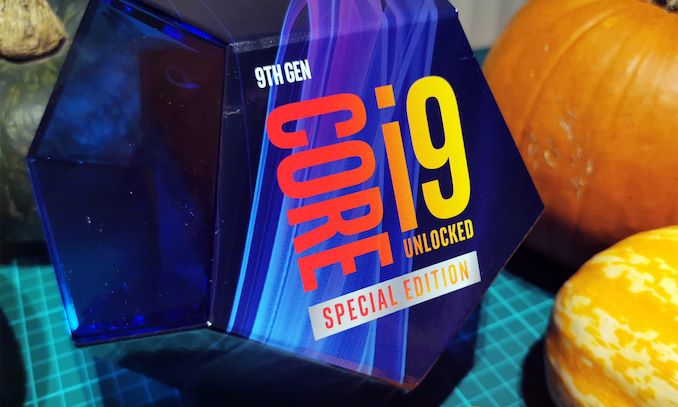
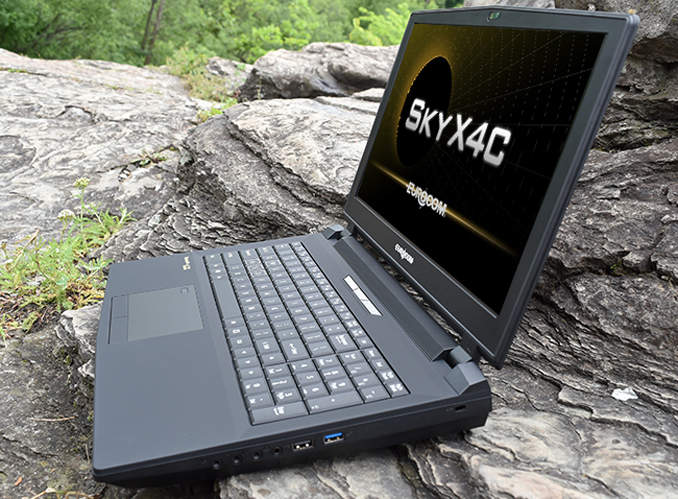

 Quote
Quote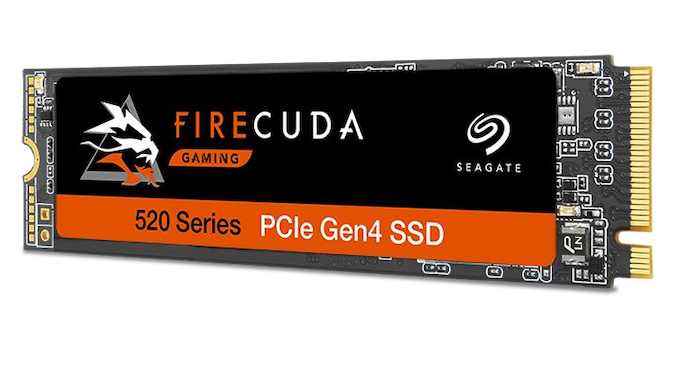
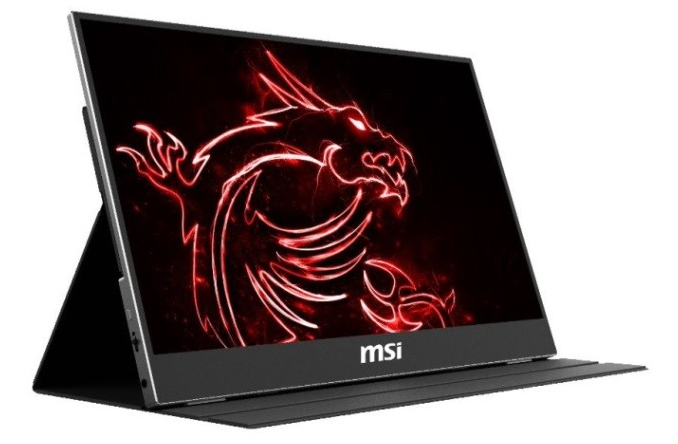
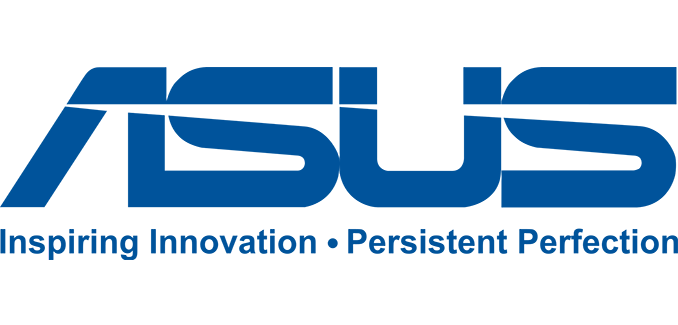
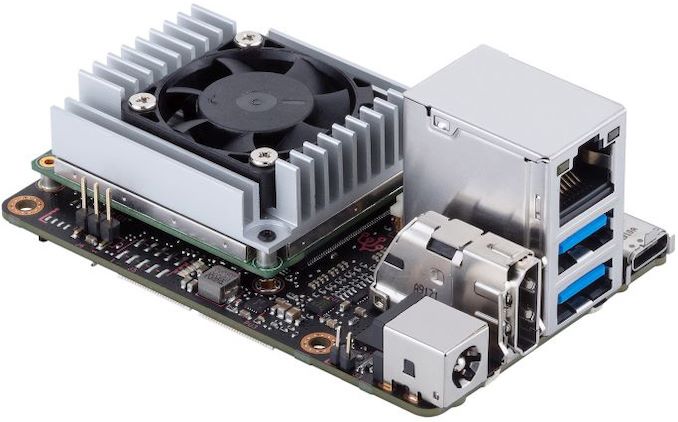
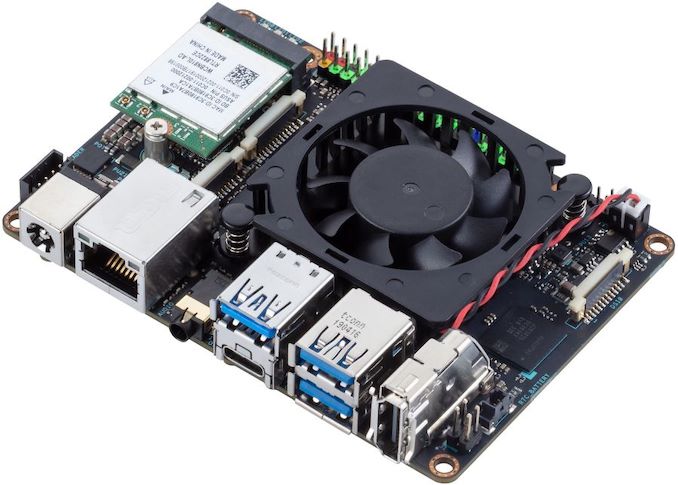
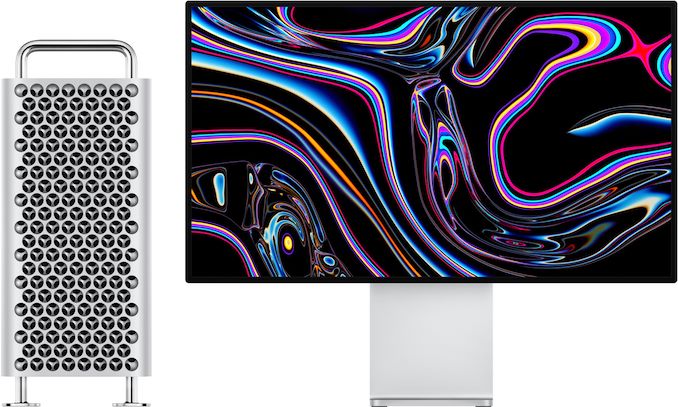
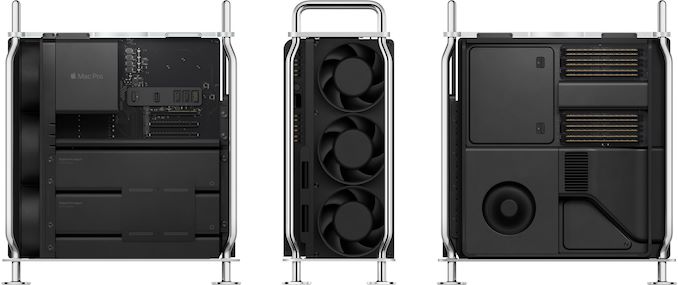
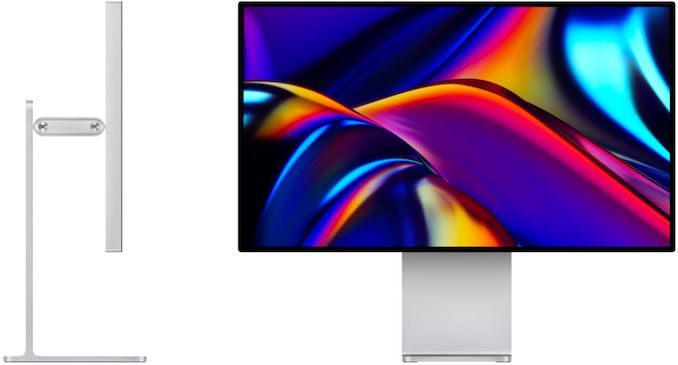
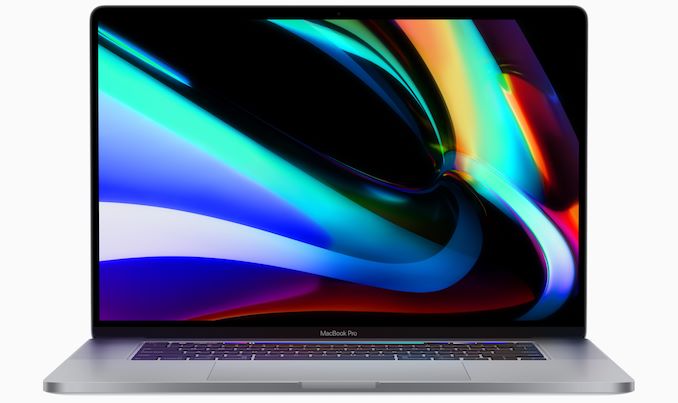

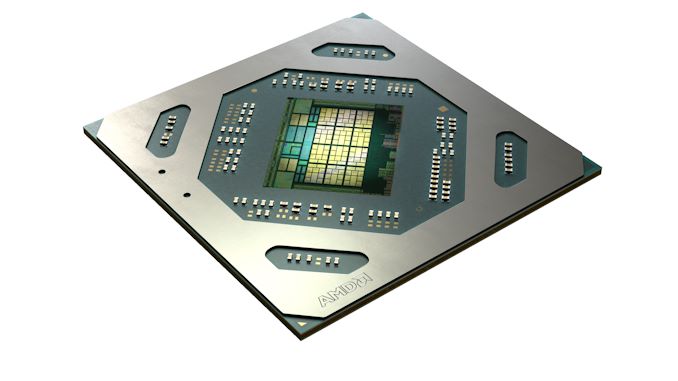
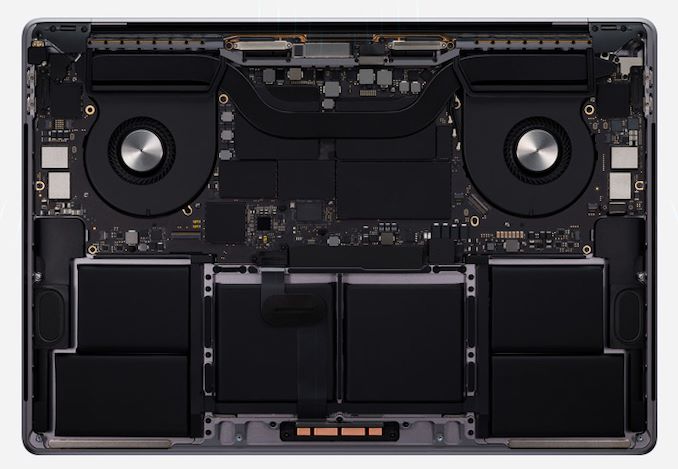

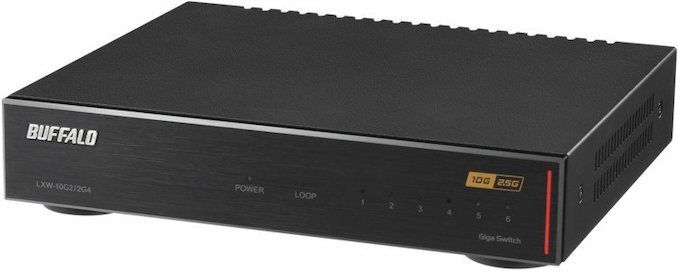
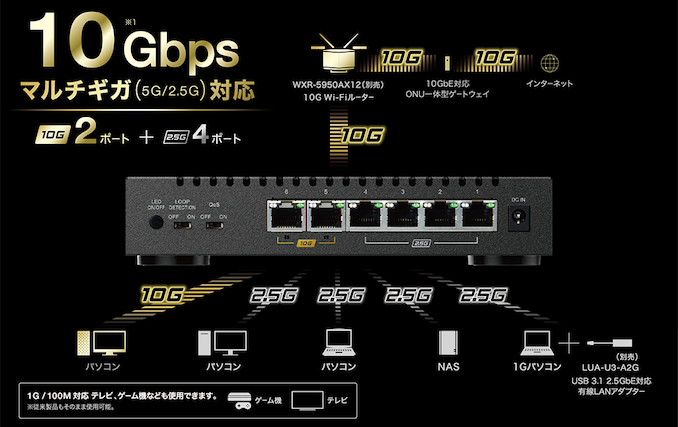

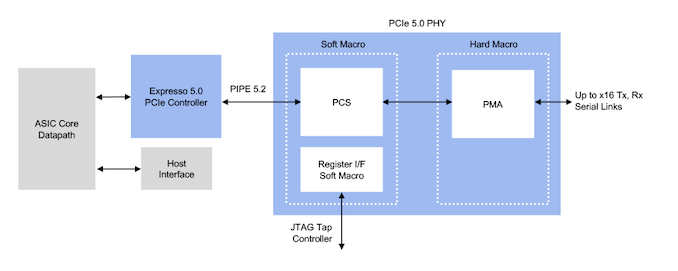
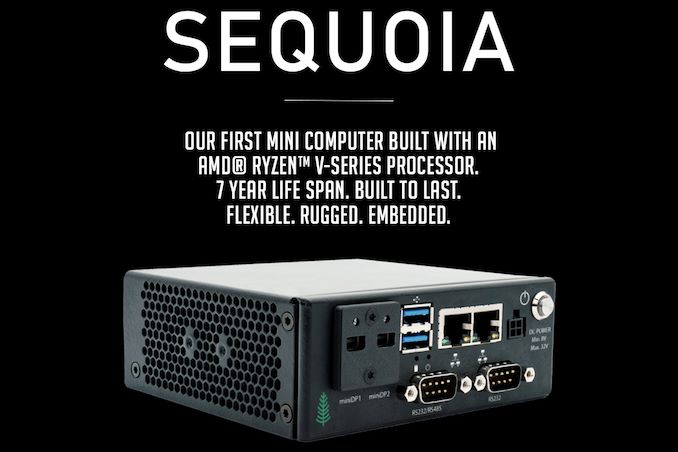


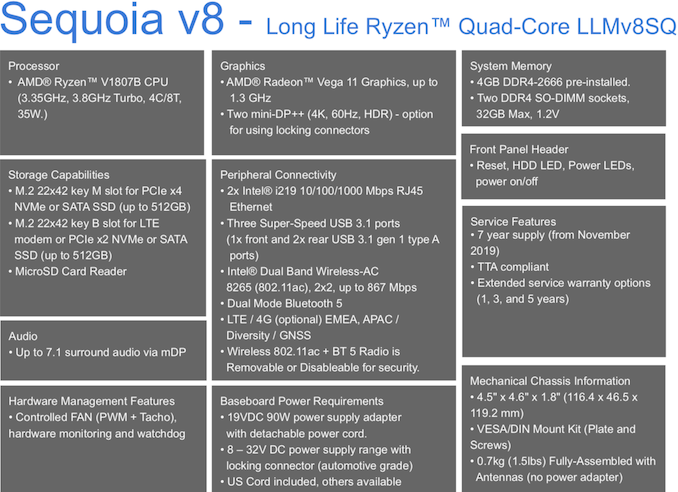
















Bookmarks